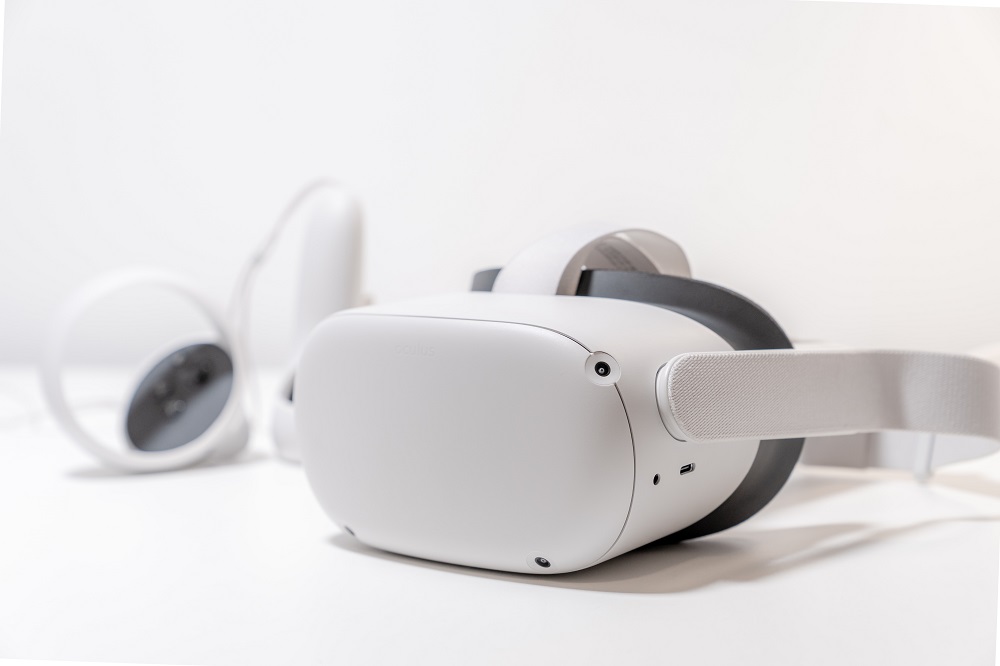Welcome to the exciting realm of augmented reality (AR) and virtual reality (VR) design, where the boundaries between the digital and physical worlds blur, and the possibilities are limitless. As a seasoned designer who has navigated the exhilarating landscape of AR and VR, I’m here to share my insights into the challenges and opportunities that this transformative technology offers. In this article, we’ll embark on a journey through the immersive worlds of AR and VR, exploring the intricacies of design in this groundbreaking field.
The Promise of AR and VR
AR and VR technologies have been on the horizon for decades, but recent advancements in hardware, software, and accessibility have propelled them into the mainstream. Let’s start by understanding the fundamental concepts:
1. Augmented Reality (AR)
AR overlays digital content onto the real world. Users experience the physical environment with computer-generated elements integrated seamlessly. Popular examples include mobile AR apps, smart glasses, and heads-up displays.
2. Virtual Reality (VR)
VR, on the other hand, immerses users in entirely digital environments, shutting out the real world. This is typically achieved through VR headsets, creating immersive experiences for gaming, education, simulations, and more.
3. Mixed Reality (MR)
Mixed reality combines elements of both AR and VR, allowing digital and physical objects to coexist and interact. It offers unique possibilities for interactive design and user experiences.
The Challenges of AR and VR Design
While the potential of AR and VR is immense, they come with their fair share of challenges. Here are some of the key hurdles that designers must overcome:
1. Hardware Limitations
One of the foremost challenges is designing for a wide range of hardware devices with varying capabilities. From high-end VR headsets to budget-friendly AR glasses, ensuring a consistent and compelling experience across these platforms is no small feat.
2. Interaction Design
Designing intuitive and immersive interactions is crucial. Traditional user interfaces don’t necessarily translate well to AR and VR environments. Designers must invent new ways for users to interact with digital content.
3. Motion Sickness
VR-induced motion sickness is a common concern. Designers need to implement techniques to reduce discomfort, such as minimizing latency and optimizing frame rates.
4. Content Creation
Creating high-quality 3D content is a specialized skill, and there’s a shortage of experienced 3D artists and content creators. This poses a challenge for both design teams and the industry as a whole.
5. Navigation and Wayfinding
In VR, users can get lost in vast digital worlds. Designing effective navigation and wayfinding systems is crucial to ensure users can explore comfortably without feeling disoriented.
6. Accessibility
Ensuring that AR and VR experiences are accessible to individuals with disabilities is a significant challenge. Designers must consider factors like voice controls, haptic feedback, and screen readers to make experiences inclusive.
7. Realism vs. Comfort
Balancing realism and user comfort is a delicate act. While hyper-realistic VR experiences can be awe-inspiring, they can also be overwhelming or unsettling for users. Designers must find the right balance.
The Opportunities in AR and VR Design
Now, let’s shift our focus to the incredible opportunities that AR and VR design present:
1. Immersive Storytelling
AR and VR offer new dimensions for storytelling. Designers can craft immersive narratives that envelop users in captivating worlds, whether for entertainment, education, or marketing.
2. Architectural Visualization
In architecture and interior design, VR allows clients to explore and experience spaces before they are built. This not only enhances client satisfaction but also streamlines the design process.
3. Healthcare and Therapy
AR and VR have found applications in healthcare, from training medical professionals to providing therapeutic experiences for patients with PTSD, anxiety, and pain management.
4. Training and Simulations
AR and VR simulations are invaluable for training in fields like aviation, military, medicine, and heavy machinery operation. They offer safe, controlled environments for hands-on learning.
5. Virtual Tourism
VR enables virtual tourism, allowing users to explore exotic destinations from the comfort of their homes. This has gained prominence, especially in times when travel is restricted.
6. Product Design and Prototyping
Designers can use VR to prototype and iterate product designs, enabling rapid testing and refinement of concepts.
7. Collaboration Across Distances
AR and VR collaboration tools are transforming the way teams work together, allowing remote professionals to meet in virtual spaces and collaborate on projects.
Designing for AR and VR: Best Practices
Given the unique challenges and exciting opportunities in AR and VR design, here are some best practices to keep in mind:
1. Understand User Behavior
Immersive experiences can evoke strong emotional responses. Understanding user behavior, preferences, and comfort levels is crucial. Conduct user testing and gather feedback regularly.
2. Optimize Performance
Performance is paramount in AR and VR. Invest in optimizing frame rates, reducing latency, and ensuring that experiences run smoothly across a range of devices.
3. Focus on User-Centered Design
Place the user at the center of your design process. Create intuitive interfaces and interactions that prioritize user comfort and engagement.
4. Simplify Navigation
AR and VR environments can be complex. Keep navigation simple and intuitive to prevent users from feeling overwhelmed or lost.
5. Prioritize Accessibility
Consider accessibility from the beginning of your design process. Ensure that your AR and VR experiences are usable by individuals with disabilities.
6. Iterate and Test
AR and VR design is an iterative process. Regularly test your designs with real users and be prepared to make adjustments based on their feedback.
7. Stay Informed and Experiment
AR and VR are rapidly evolving fields. Stay informed about the latest technologies and trends. Don’t hesitate to experiment and push the boundaries of what’s possible.
Case Studies: Transformative AR and VR Experiences
Let’s explore two case studies that exemplify the transformative power of AR and VR design:
Case Study 1: Oculus Rift
Oculus Rift, a VR headset developed by Oculus VR (now a subsidiary of Meta Platforms), has revolutionized the gaming industry. With its immersive experiences and intuitive interactions, it has brought virtual reality gaming to mainstream audiences, redefining the gaming landscape.
Case Study 2: Pokémon GO
Pokémon GO, a mobile AR game developed by Niantic, became a global phenomenon. By overlaying Pokémon in real-world locations using AR technology, the game encouraged players to explore their surroundings actively. It showcased the potential of AR for blending digital and physical experiences.
Conclusion: The Future of AR and VR Design
As we wrap up our exploration of AR and VR design, it’s clear that this field is poised for exponential growth and innovation. While challenges persist, the opportunities for designers to create transformative, immersive experiences are boundless.
Whether you’re crafting the next blockbuster VR game, designing therapeutic VR experiences, or pioneering new ways for teams to collaborate in AR environments, your role as a designer in this dynamic field is more critical than ever. Embrace the challenges, seize the opportunities, and continue pushing the boundaries of what’s possible in the exciting worlds of augmented and virtual reality. The future of AR and VR design is limited only by your imagination.
ABOUT AUTHOR

Alison Housten
Lorem ipsum dolor sit amet, consectetur adipiscing elit. Ut elit tellus, luctus nec ullam.

RECENT POSTS


